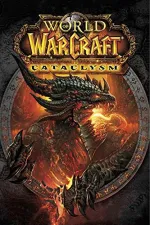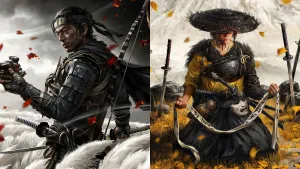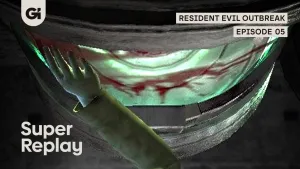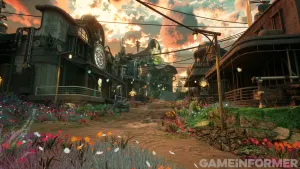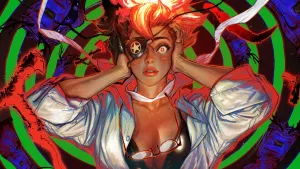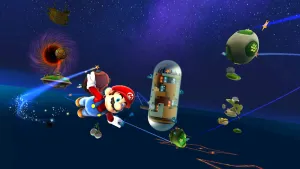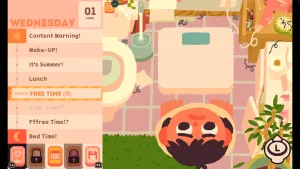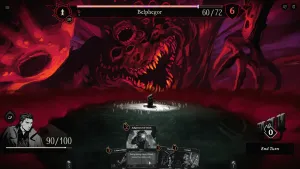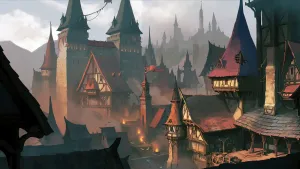Blizzard's Jeff Kaplan on Warcraft's Past And Future
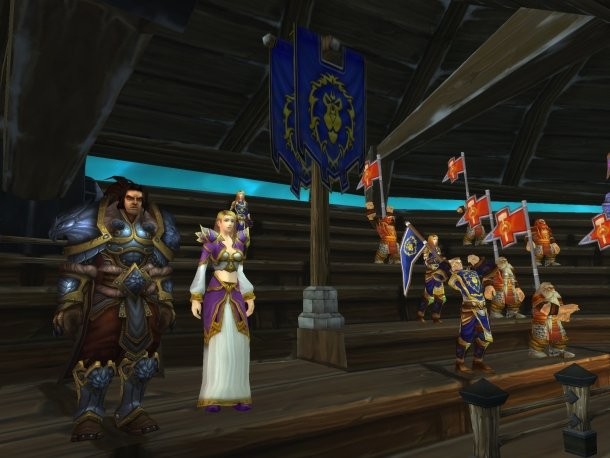
In issue 201 of Game Informer, we've got an interview with long-time Blizzard veteran Rob Pardo, where he shares some great and surprising stories about the creation and evolution of World of Warcraft. We also got a chance to talk with a more recent addition to the company, Jeff Kaplan, who was hired in 2002 just as development of World of Warcraft was ramping up. Kaplan had some fantastic insight into why the Warcraft universe has become so popular, why it's remained a PC-only franchise thus far, how they decided on 40-person raids for World of Warcraft, and how the series might evolve in the future, including when we'll see more in-game cutscenes in World of Warcraft.
Check out the full interview below!
Game Informer: I know you were a big EverQuest player, so I’m sure that made it exciting to begin working on World of Warcraft. Were you a fan of the Warcraft franchise before you joined Blizzard? Had you played any of the real-time strategy Warcraft games?
Jeff Kaplan: It’s really ironic, because I was not an RTS gamer at all. Then I came to Blizzard during that time period of May of 2002, which was right when Warcraft III was in the final stages of crunch. I joined the team, and my first assignment was playing Warcraft III and doing nothing but playing Warcraft III. I had to get to know the game like the back of my hand. I played Warcraft III for weeks and weeks, crunching and working late hours. It was awesome. It was a great sort of trial by fire coming into Blizzard and getting to know Warcraft through Warcraft III. That was my experience.
GI: That sounds like a pretty awesome first week of working, coming in and being told, “Hey, play Warcraft III. Non-stop.”
JK: It really was. Not only to play it, but to play with the guys who were making the game. I was not a heavy contributor on Warcraft III. In fact, I think I have a credit of “additional testing,” which is basically just the luckiest guy who got to hang out with all the guys doing the real work. It was a lot of fun getting to ask those guys what I should be doing when I got beat. It was really cool.
GI: If you had to sum up the story of the Warcraft universe for someone who’s never touched a Warcraft game, what would you say?
JK: Warcraft is an epic fantasy adventure that spans tens of thousands of years. It involves many different races and raises questions of “Who are we?” and “Why are we on this planet?” -- this planet being Azeroth, not our own. I really think that sums it up. More than anything, the focus is on Horde versus Alliance, which goes back to the title of the first game, Orcs vs. Humans. That tension between two great armies is a big part of the Warcraft universe as well.
GI: The reason I ask that, of course, is that the World of Warcraft movie is in the works. Do you think the Warcraft lore can appeal to non-gamers as well as the very large crowd of gamers that it’s appealed to already?
JK: Totally. One of the things that Warcraft has going for it is that even though it’s set in the fantasy genre, it’s a very accessible intellectual property in so far as we don’t take ourselves too seriously. We constantly pay homage to current events. We make a lot of pop culture references, which I think makes it a very inviting and safe universe for people who are not traditionally fantasy fans to get into.
GI: You mentioned that when you first came to Blizzard, you started off working on the tail end of Warcraft III. How soon after you got there did you start work on World of Warcraft?
JK: World of Warcraft was in production when I joined the team. They already had an engine in place, and they had some great prototyping for what the world looked like. The team had been busy for about two years by the time I joined. They had a good infrastructure going, the client-server setup was running, and the art style was already very well-defined. Warcraft III had definitely borrowed some resources from WOW, but soon after Warcraft III shipped, it was quickly back to all hands on deck on WOW. There was a rejuvenated sense of focus after Warcraft III was out the door. We knew we had to make World of Warcraft great.
GI: You’re primary job with World of Warcraft was world design, right?
JK: That’s correct. I actually joined the World of Warcraft team as one of the two first quest designers, specifically to create quest content and to design that system. The other quest designer was a really great Blizzard veteran by the name of Pat Nagel. He and I worked in collaboration with the lead designer to design the quest system and start making some of the first quest content.
As WOW progressed from there, I got very involved with all things PvE with the game. When it came to dungeons, I helped formulate the vision along with some of the other guys as to what our dungeon experience and raid experience might be like. I worked very closely with our creative director, Chris Metzen, who was sort of the keeper of the flame when it came to the lore of Warcraft. I tried to apply his vision in a game design sense to world design and world building. I was kind of a medium between Chris Metzen and our level designers and our environmental artists.
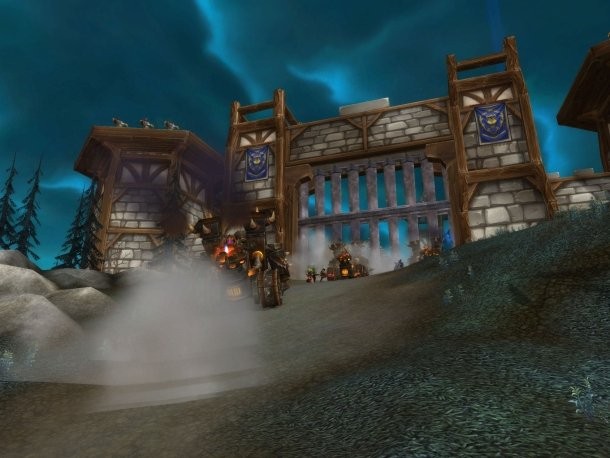
GI: What was your vision for the world design? How did you want to make World of Warcraft different from MMOs that had come before it?
JK: There’s a lot of ways to answer that question. On a purely technological point, we wanted to make a seamless world, where when you travel from one zone to another, you didn’t get a loading screen. We kind of take that for granted in 2009, but being able to transition seamlessly between zones was a really big deal.
There were other people who we were friends with at other MMO companies, and they’d tell us, “If you try to do the seamless zone thing, your whole world’s going to look the same, because you have to keep your texture set within certain boundaries.” That was funny to us, because we had a prototype area of Westfall, Elwynn Forest, and Duskwood, all of which had drastically different lighting and tilesets, and it was up and running and working. We had our proof of concept. We knew we were going to make it work. That was definitely a ground-breaking focus of our world design.
Beyond the technological standpoint, there was also some of our design philosophy. Our idea was that environment or parts of the world could also be a progression indicator for players. New environments are a reward for players. Therefore, we wanted to make sure that each environment was drastically different from the one before it. We also wanted to make sure that each area had a really strong story to it and a strong sense of place.
We also did a lot of reworking the level flow through the zones to make sure that places that felt epic, such as Burning Steppes, took place at epic moments in the leveling progression. To put it into perspective, when I joined the team back in 2002, Burning Steppes was slated to be a level 30 zone, and Hinterlands was slated to be a max level zone. We did an adjustment there where we decided, “Let’s take the big, epic volcanic zone and make that a max level zone, and we can drop some of these less epic zones down.” A lot of subtle design philosophy seems like pretty obvious stuff.
GI: Yeah, but that’s important. Obviously, a game where Hinterlands was a level 60 zone would have been a very different experience. How did your design philosophy change between the original game and The Burning Crusade, and again between The Burning Crusade and Wrath of the Lich King? What new ideas did you add onto that or change as those expansion packs came out?
JK: In terms of design philosophy, that’s a really good question, because it goes beyond just a feature list of what we added to the game. The marked design philosophy change between shipping World of Warcraft and The Burning Crusade was the change in quest philosophy and zone design.
You saw evidence in the original game of the concept of quest hubs and quest flow, how you get the player to not only progress between zones but to progress within a zone. I think Burning Crusade is where we really refined that concept of making sure the player gets a very full and guided experience within each zone. We learned how to do that through a very concentrated hubbing philosophy.
The biggest design philosophy change between Burning Crusade and Wrath of the Lich King without a doubt was an eye toward accessibility and trying to get more players to experience more of the content, whether that be with PvP or PvE. This was evidenced greatly in things such as the tuning level on Naxxramas and the fact that Naxxramas, which was our end-level raid of Wrath of the Lich King, had both a 10-person and a 25-person version of the raid.
This also affected our tuning philosophy behind the Wintergrasp raid boss, which was really tuned to be accessible for everybody. As a PvP reward with PvP items on his loot table, we were really trying to introduce more players to more aspects of the game. I think that eye toward accessibility can be seen throughout Wrath of the Lich King.
GI: One of the things that I’ve picked up on personally that’s been improving with the expansions -- whether you’re looking at quests or instances or raids or anything -- storytelling seems to be a more and more important factor with subsequent patches and expansions. This stands out to me, because very few other MMOs have managed to create captivating narrative content, but it seems like you guys are really striving for that and often succeeding in World of Warcraft. Is that something you expect to continue progressing in future World of Warcraft expansions and future Blizzard MMOs, or will narrative always take a backseat to the grind in MMOs?
JK: It’s funny, because you said that narrative became more important, but I look at it a little bit differently. The story was always extremely important to us; I just don’t think we did a good job of telling it early on. What happened over the years as World of Warcraft progressed is that we had this very seasoned development team. Guys like Chris Metzen, our creative director, were partnering with guys like Alex Afrasiabi, our lead world designer who headed up the quest team. We’ve got the most experienced quest team in the industry. These guys are masterminds now when it comes to telling a story. They’re just much better at doing it than we ever were before.
They really wrapped their heads around the concept of letting the players experience the story first-hand rather than just trying to beat them over the head with text, which is something that’s really important. In the early days, we did a lot of quests where we put a lot of time, heart, and soul into designing them. If you go back and look at the “Green Hills of Stranglethorn” quests, for example, there’s a lot of text written, and there’s actually quite a bit of story there, but the players don’t absorb it, because they don’t experience it themselves.
If you fast-forward to something like the Death Knight starting experience, our story-telling team has really mastered or refined the art of delivering the story as first-hand gameplay rather than spraying you with the word hose, which is what we did in the past.
GI: That’s a good way of putting it. So you would expect that to continue, where in addition to creating a compelling MMO, you want to tell compelling stories as well?
JK: Yeah, I think what really excites us is the concept of bringing those two notions together. It doesn’t have to be mutually exclusive. We can enhance great gameplay by having a great story along with it. We just have to be careful to make sure that the story isn’t getting in the way of the great gameplay. Our guys have gotten really good at respecting the fact that players are having this gameplay experience and that they just need to add to it with story elements rather than sidetracking them or making them click through pages of words. It really boils down to that axiom of "show, don’t tell." That’s the new philosophy that they’re embracing, and they’re just getting better at their craft.
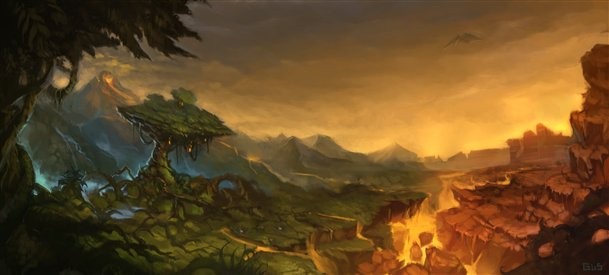
GI: I would agree that the game has gotten much better at showing rather than telling, but Wrath of the Lich King also saw the introduction of cutscenes to the game. It’s obviously much easier to tell the story in that, but you’re also taking the player out of the game. Do you think that those will keep showing up future expansions as well? Is it something you’ll use sparingly?
JK: Cutscenes will always be something that we use sparingly, yes. We never want to interrupt gameplay too frequently or for too long of a period of time. The Wrathgate cutscene was a big experiment for us. It was our first foray into in-game cutscenes in World of Warcraft. I don’t think we’ve fully refined how we want cutscenes to work with future World of Warcraft content.
We debate like crazy. We debate the length, we debate the frequency, and we have a lot of theories, but Blizzard is a really iterative development house. I think what’s going to have to happen is that you’ll see more cutscenes come into the game for us to really refine our strategy with them. We definitely have an eye toward more cutscenes, but at the same time, we don’t want to become just a cutscene game.
Even before Cataclysm, in patch 3.3, there’s going to be a really exciting cutscene moment that’s going to be our next experiment with that.
GI: Nice! And just to be clear, I actually really love the Wrathgate cutscene. I thought it was fantastic. I’m definitely not a hater on that type of storytelling as well.
So for anyone who’s played Warcraft III, I think Arthas has been easily the most identifiable bad guy of the Warcraft universe. There’s lots of other bad guys, but he’s the one that everybody knows and loves to hate. That’s another thing that’s been pretty unique to you guys for an MMO. It’s rare that an MMO has a villain who’s that well-known and easy to hate. Now that he’s finally getting taken down during the final raid of Wrath of the Lich King, do you think that it will be tough creating a new bad guy in the Warcraft universe that players really care about?
JK: The key to creating bad guys in episodic video games is making sure not to make the bad guy the sole focus of a game before his time. What I mean by that is -- take Cataclysm for example -- Deathwing is going to be the focus there, but Deathwing has been around in Warcraft lore for a very long time now. It’s more about developing an existing bad guy to the point where players feel like it’s acceptable for that to be an end villain of an expansion or a patch or an era of the game.
All the while, we need to be planting the seeds for new villains in the game, and I think you’re going to see a lot of that over the next few years in Warcraft. That doesn’t mean that there will suddenly be poster boys for the next expansion or anything like that. It’s going to take quite a while for those characters to develop. I always remind people that Arthas didn’t exist before Warcraft III. There was a very long history to Warcraft preceding that time period. It’s a matter of being strategic about it, not forcing the idea before its time, and then really reinforcing who these people are as characters. That goes back to the core of character development.
To give you the quick answer, I think what you’ll see is a further developing of existing villains while we plant the seeds for new ones.
GI: My guild is actually just starting to dig into raiding, so I wanted to ask a couple of questions about that. With the original World of Warcraft, end-game raiding started out as these huge 40-man raids. I remember the first time I did Molten Core, although I have no idea how I got a group of 40 people together. But I remember that this epic trinket dropped, and I managed to win it and was overjoyed.
JK: Nice!
GI: Right? But how did you decide on 40-man as the number for raiding in the original game?
JK: It’s funny that you ask. To give a bit of background perspective, we didn’t know how the end-game was going to play out exactly in World of Warcraft. The best that we could do was to look toward similar games and make some assumptions. At the time, we felt like there were two juggernauts in terms of end-game in the MMO space. One was Dark Age of Camelot, and the other was EverQuest. In EverQuest around that time period, the raiding size was 72 people. In Dark Age of Camelot, they would do these massive PvP fights that I don’t think there was a cap on. It was basically “until your computer melts on you” as the player cap. So upwards of 100 people would be PvPing in one area.
Our instincts were definitely to go smaller. We felt like with those big sizes, although there was a hint of epicness in them, the reality was that individual contribution didn’t really mean anything when the size got to be too big. Plus it was unwieldy to get that experience to happen from a purely social and logistical standpoint. So we wanted to shoot smaller.
Basically what it boiled down to was an argument between Rob Pardo, Alex Afrasiabi, and myself. Two of us were arguing for 50-person raid size, and one of us was arguing for 30-person raid size. We compromised and picked 40. It’s kind of an ironic decision. We don’t normally compromise on design decisions like that, but that’s how 40 was picked. Rob, Alex, and myself all had extensive EverQuest raiding experience. To be honest, in order to really appeal to EverQuest raiders, we couldn’t go too far below those numbers, even if we thought those numbers were too high.
If you’re wondering why we then went from 40 to 25, you can only move the community’s mindset so quickly. Sometimes you need to do adjustments over periods of time. 40 was a big cut from 72 or hundreds-plus, and eventually the community was ready for another step where we could make the content a little more manageable for everyone.
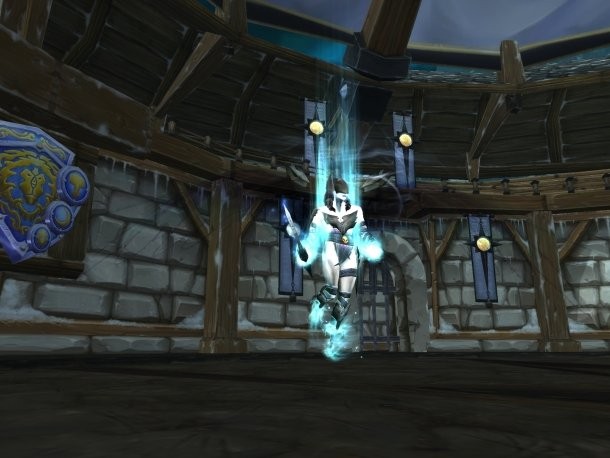
GI: You mentioned that with these big numbers, there was sort of this feeling of epicness. Although I didn’t raid too much in original World of Warcraft or The Burning Crusade, I definitely remember feeling that with 40 people in Molten Core. Do you think the game has lost anything by not having raids of that size? Or is it more important to have it be more accessible?
JK: Both, to be honest. I think you’re right on both. I would be lying if I said I don’t think the game has lost something by not having 40-person or even larger games in the raid. At the same time, I think the game is much better off for having that smaller raid size. There are a couple reasons why.
One, I think it’s important to create content that’s accessible. When I say accessible, I’m not saying we want “noobs” or casual players to be able to run it, I mean even within a hardcore raiding guild. We want individuals to be able to have a full experience where their roles matter in the raid. As we bring the number down, the individual matters more. The experience in numbers may not be so epic, but the experience in depth and in actual action is a lot more epic, what the individual player is experiencing.
There was also a huge logistical nightmare for people trying to do 40-man raids. It became very unwieldy and stressful for guild leaders to manage the large raid sizes. We also saw an unhealthy habit occurring in guilds where guilds would over-recruit just to be able to field a 40-person raid. Then they would bench large numbers of people because they had to over-recruit so much just to guarantee the 40-person factor. It was a very unhealthy social dynamic going on. Usually what would happen is that there would be a core of the guild of maybe 10 people, but they were just bringing people into their guilds in mercenary fashion to help them get through this content. The smaller the raid size, the more that becomes reduced.
There were a lot of factors. Also, to be frank, the level of quality that we can deliver from a tuning standpoint is so much higher with a lower raid size because of the amount of testing we can do on it. It gives us better peace of mind knowing that we know exactly how the encounters play out. Once you get into numbers like 40, there are so many wild cards. Do you tune the encounter for 40 extremely skilled players? 30 extremely skilled players and 10 noobs? 10 extremely skilled players and 30 noobs? It’s very difficult to tune content for large sizes like that.
GI: With the drop to 10-man or 25-man for all raids, another major change was the ability to run 5-man dungeons for badges that you can use to purchase equipment that would normally only drop from raids previously. These kinds of changes seem focused on appealing to more casual players, but I know that some hardcore players complain about them. How do you strike that balance in the Warcraft community between pleasing the hardcore fans but still making things accessible?
JK: It’s not even just a casual versus hardcore thing. It’s a play style choice. There are some players who just never want to experience the large raids. They’re not interested in hanging out with 25 players online. Some of those are very skilled, very hardcore players who play the game more than people who play 25-person raids. Between PvE and PvP, we have these separate paths to the end-game for people to pursue. The same goes for within a game type.
If you take PvE, we have to make sure that five-person groups or solo people or 10-person groups or 25-person groups, that everyone has access to really good gear and progression that they feel good about. We don’t want them to feel like Blizzard is only validating one way to play. What we like to remind the hardest of the hardcore 25-person raid groups is that at the end of the day, when it comes to the best of slot items, you’re still the only people with it. Just because we’re doing a bit of catch-up for everyone else doesn’t mean that we’re diminishing your accomplishments at all.
I think amongst the players, they also recognize the elite titles and Achievements that those hardcore players are earning. Being a former very hardcore raider from EverQuest, I understand that mentality. The thing those players want most is to attain something that nobody else has, which is sort of an interesting paradox in a game with an 11.5 million player base.
GI: I don’t suppose you want to tell me what the new MMO you're working on is, so we can probably skip that one.
JK: [Laughs] Yeah, skip that one.
GI: Well, since we’ve talked a lot about the past of the Warcraft franchise, let’s end on a question about the future of the series. Do you think the future of the Warcraft games is going to be largely online, or do you think there’s room for more single-player experiences in the Warcraft universe? And do you think the series will remain on PC only?
JK: The way that we’re looking at Warcraft these days is as an intellectual property that we love, that’s existed for 15 years at this point. I don’t think it exists in a single game or a single game type. Obviously, we transcended the RTS into the MMO, but beyond that with the Warcraft comic, all the Warcraft novels that have come out, the Warcraft movie that’s now being worked on, I think we’re now seeing Warcraft as something that goes beyond any one particular game type.
Blizzard has always proven in the past that we have a keen interest to be online and be multiplayer, but to never under-represent the single-player experience. That’s very important to us as well. When you see StarCraft II in all of its glory -- and it is turning out to be glorious -- you’ll see what I mean. Everybody knows StarCraft from the multiplayer competitive scene. That’s it’s place in history. But the single-player experience is simply mind-blowing. It’s something that we’re extremely proud of. The same goes for Diablo, where the single-player experience is extremely strong. Even in World of Warcraft, our earliest design philosophy was that you should be able to achieve maximum level even if you’re just playing by yourself. One of our development mantras was that the game should be fun even if nobody else is playing it. I don’t think we’ll ever lose sight of that single-player experience.
To touch on the PC question, we don’t ever decide “Hey, we’re making a PC game,” or “Hey, we’re making a console game.” What happens is that a development team will move onto its next project, and the creative leadership of that team will decide what kind of game they want to make. Later it will be decided what the appropriate format or the best blank canvas for that game is. That’s what we’ll make it on. If it happens to be PC or console or both, whatever it is, that’s what we’ll do.

Get the Game Informer Print Edition!
Explore your favorite games in premium print format, delivered to your door.
- 10 issues per year
- Only $4.80 per issue
- Full digital magazine archive access
- Since 1991
